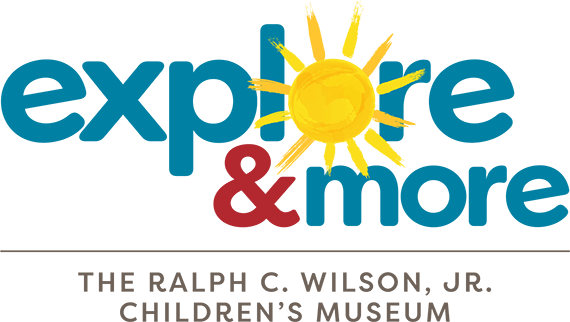By: Margaret Foley and Bingzheng Ji
Masters Students at the University at Buffalo
This special “Sanity Saver” blog entry is based on the Living Lab project originally planned to be implemented with our visitors in Spring of 2020.
The Living Lab is a collaborative project between UB’s Early Childhood Research Center (ECRC) and Explore & More – The Ralph C. Wilson, Jr. Children’s Museum. The Living L is designed to bring child development research and knowledge directly to you through play-like experiments with your child! In each of the Living Lab sessions, UB graduate student researchers would engage your child in a brief and play-like experiment based on cutting-edge research. They would then explain to you the purpose of the experiment and why it is important. In addition, they would provide some fun activities and ideas for you to try at home to facilitate your child’s learning and development.
Since all in-person activities are on hold the ECRC and E&M partnered together to still be able to reach you in your living room! The UB student researchers have created fun and engaging activities based on their research experiments. We hope you will try them out.
As Explore & More’s community partner, ECRC also welcomes you to check out its online resources and activities for young children (ages 2-6) and their parents and caregivers: https://www.facebook.com/EarlyChildhoodResearchCenter.
Have you ever wondered when your child is going to realize you can’t see what they are pointing to because you are in the other room? Do you just wait for the day that your toddler understands that using different pictures can build the same building? Understanding that different people see things differently, also known as visual perception-taking, is an important social emotional skill that children start to develop early in life. In this activity, children will use blocks to recreate a picture while their caregiver or sibling uses blocks to recreate another picture of the same structure from a different angle. Through this activity, caregivers will be able to compare and contrast buildings and talk about why different people sometimes see things differently.
Materials:
Two sets of building blocks Camera or phone that can take pictures
Printer
Printer paper
Four pictures of the same building or structure from different angles
Length:
Set Up/Prep: 10 minutes
Activity:
15+ minutes Development
Subject Areas:
Social and Cognitive Development
Directions:
Step 1: Use a few building blocks to build a simple building or structure.
Step 2: Take four pictures of the building from four different angles.
Step 3: Print out the pictures or display them on your phone so you child can see all four pictures. Do not tell them that all the pictures are of the same building.
Step 4: Have your child pick one of the pictures and ask them to recreate the building in the picture using blocks.
Step 5: While your child is working on their building, choose one of the remaining photos, and recreate it using the building blocks.
Step 6: When everyone has finished building, compare the two buildings. What is the same about them? What is different?
Step 7: Explain that the pictures were all of the same building. Ask the child why the building they made looks different from the building you made and talk about how different people see things differently when they look at them.
Here are some suggested adaptations
1. No blocks? No problem. Use recycled containers like tissue boxes, toilet paper rolls, and soup cans to create different structures.
2. Do not worry about printing out your pictures if you don’t have a printer. Use a phone or tablet to show your child the pictures or create your own drawings of the building from different angles using markers and paper.
3. Are there multiple people living in your house? Ask them to recreate one of the pictures too!
4. Ask your child to build a structure and draw it or take a picture of it from two different angles. Once they are done, have them challenge two people in their house to build the same structure and see how similarly they turn out.
Vocabulary words
Compare- To look at things and notice is the same about them and what is different.
Contrast- To look at things and notice what is different about them.
Similarity- Something that two things have that are the same or are close to the same.


